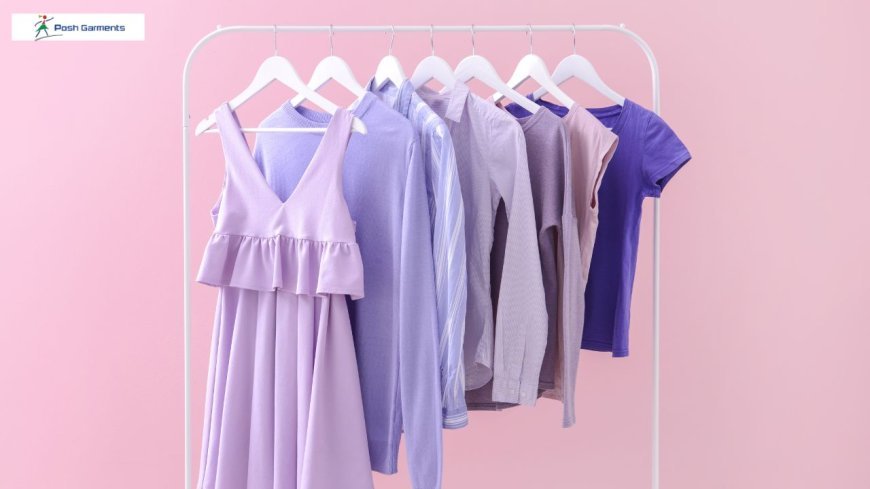From Design to Delivery: A Step-by-Step Look at Bangladesh Clothing Manufacturers’ Process

Bangladesh’s clothing industry has long stood at the forefront of global apparel production, thanks to its ability to deliver quality garments at competitive costs. Over the decades, Bangladesh Clothing Manufacturers have honed a systematic process that transforms creative concepts into market-ready products, serving both established brands and emerging labels worldwide. Understanding this production workflow offers a glimpse into the diligence, skill, and coordination that underpin Bangladesh’s reputation in the global fashion supply chain. Below is a detailed, step-by-step overview of how garment manufacturers in Bangladesh transform design ideas into finished pieces, consistently meeting international standards of quality, reliability, and efficiency.
The Step-by-Step Production Process
1. Concept and Design Development
Every garment begins as a concept—an idea sparked by fashion trends, consumer preferences, or a brand’s unique vision. The process starts with intensive collaboration between the brand’s creative team and the manufacturer’s design and development unit. During these initial discussions, manufacturers offer their expertise on technical feasibility and cost implications, ensuring the concept aligns with practical production considerations.
Designers then produce sketches, mood boards, and technical drawings. These serve as blueprints that detail a garment’s shape, measurements, and construction methods. Precise specifications are vital: they help manufacturers translate the designer’s vision into a replicable format for large-scale production. Often, digital tools and 3D simulations are used at this stage to visualize different colorways or fabric drapes, enabling quicker refinement and eliminating guesswork.
This collaborative approach not only ensures that brands achieve their desired aesthetics but also helps avoid potential production pitfalls. By resolving design and technical constraints early, manufacturers can maintain a smoother workflow in subsequent stages.
2. Material Sourcing and Fabric Selection
Once the design is finalized, the focus shifts to selecting suitable materials. Bangladesh Clothing Manufacturers typically have extensive networks of fabric mills and suppliers, giving them access to a broad spectrum of textiles—from lightweight cottons to performance-oriented synthetics. This variety allows them to cater to different brand niches and consumer demands.
During material sourcing, manufacturers evaluate key factors like fabric quality, cost, and sustainability. Laboratory testing or in-house assessments may be conducted to check colorfastness, shrinkage, and durability. Swatches are often sent to the brand’s design team for approval, ensuring the fabric meets both aesthetic and functional requirements.
In recent years, sustainability has grown increasingly important. Many manufacturers now actively seek out organic, recycled, or eco-friendly fabric options, aligning with the rising global emphasis on responsible sourcing. This step not only shapes the overall look and feel of the final garment but also impacts cost, production speed, and environmental footprint.
3. Pattern Making and Sampling
With fabrics chosen, the production team proceeds to pattern making and sampling. Skilled pattern makers convert design specifications into precise templates that will guide the cutting of fabric. Digital pattern-making software and CAD (Computer-Aided Design) systems are frequently used to enhance accuracy and reduce material waste.
After creating the initial patterns, manufacturers move on to producing prototype samples. These samples are invaluable for assessing garment fit, construction, and aesthetic details. Brands typically review these prototypes and may request revisions—such as altering the garment’s length, adjusting seam placements, or refining the silhouette.
Sampling is a crucial step because it is easier and more cost-effective to make alterations before large-scale production begins. This stage often involves multiple sample iterations, especially if the garment features intricate embroidery, specialized prints, or complex silhouettes. Ultimately, the approved sample serves as the reference standard for all production units, ensuring every piece produced matches the brand’s vision.
4. Bulk Cutting and Stitching
Once the prototype is approved, the process shifts from small-batch sampling to large-scale production. The first major task is bulk cutting. High-precision cutting machines, often guided by digital markers, slice through stacked layers of fabric to create multiple garment components simultaneously. This automation enhances both speed and accuracy, minimizing waste and ensuring consistency across thousands of pieces.
Next comes the stitching phase. Teams of experienced sewing operators work on assembly lines dedicated to specific sections of the garment—such as sleeves, collars, or hems. This specialization helps maintain efficiency and uniformity. Complex designs might require extra care, multiple stitching techniques, or specialized machinery. Throughout stitching, quality control checkpoints are integrated, allowing floor supervisors and quality inspectors to quickly identify and correct any deviations, ensuring that each garment meets the brand’s quality benchmarks.
5. Embellishments and Finishing Touches
For garments requiring additional design elements—such as logos, embroidery, appliqués, or screen prints—embellishments are added at this stage. These details can transform a simple piece of clothing into a statement item, elevating brand identity and consumer appeal. High-quality embellishments also require careful handling to maintain color vibrancy and durability through multiple washes.
Following embellishment, garments go through a finishing process. This entails attaching buttons, zippers, snaps, hangtags, and brand labels. Workers also trim loose threads, press the garments for a polished look, and check the alignment of prints or embroidery. The finishing touches are critical, as they can significantly impact the customer’s first impression of the garment’s overall quality.
6. Quality Control and Inspection
Although quality control is a continuous process, a final, rigorous inspection happens after all assembly and embellishment work is completed. Specialized teams or third-party inspectors measure garments against the brand’s specifications—looking for accurate sizing, consistent stitching, correct color matching, and any defects like loose threads or uneven seams.
Random sample checks are common practice, ensuring that any batch irregularities can be identified quickly. If the items pass inspection, they are authorized for packing; if not, they are either repaired or discarded, depending on the nature of the fault. This stringent approach solidifies Bangladesh’s reputation for reliability, as brands can trust that the products arriving at their warehouses meet the promised standards.
7. Packing and Shipping Preparation
Once the garments clear inspection, the packing stage begins. Items are folded according to brand guidelines, sometimes wrapped in protective plastic or tissue to avoid creasing or damage in transit. Labels indicating style numbers, sizes, and barcodes are affixed, aiding retailers or distribution centers in inventory management.
Proper packaging is crucial to ensure the garments remain in pristine condition until they reach store shelves or online retailers. Manufacturers work closely with shipping partners to coordinate export logistics, frequently scheduling container shipments by sea or air, depending on delivery timelines and client budgets. Accurate documentation—such as invoices, packing lists, and certificates of origin—is prepared to streamline customs clearance and avoid delays at international borders.
8. Delivery and Client Feedback
After packaging, the garments embark on their journey to the brand’s designated destination—be it a warehouse, retail store, or online distribution center. Manufacturers often provide tracking details and maintain open communication channels, enabling clients to monitor their shipments in real-time.
Upon delivery, manufacturers typically solicit feedback to gauge the brand’s satisfaction with overall service and product quality. This feedback loop helps identify any areas for improvement—be it adjusting lead times, enhancing fabric choices, or refining certain design elements. Over time, consistent dialogue fosters strong, long-term relationships between Bangladeshi manufacturers and global fashion brands, translating into repeat orders and steady growth.
Conclusion
The production process that Bangladesh Clothing Manufacturers follow is a methodical, multi-stage workflow, carefully managed from concept to completion. By combining design expertise, robust material sourcing networks, skilled craftsmanship, and rigorous quality control measures, they have evolved into trusted partners for the world’s top apparel brands. Each step—designing, sourcing, sampling, bulk production, embellishment, finishing, quality control, and final shipment—is executed with precision, reflecting a commitment to delivering garments that balance aesthetic appeal with durability and cost-effectiveness.
This structured approach not only enables Bangladesh to remain a leading apparel exporter but also highlights the nation’s adaptability and forward-looking mindset. Whether catering to fast-fashion giants or high-end luxury labels, Bangladesh Clothing Manufacturers consistently demonstrate the diligence, efficiency, and collaboration essential for success in the ever-evolving global fashion industry. Through continuous innovation and unwavering dedication to quality, they maintain a strong position on the global stage—ready to meet the demands of discerning consumers worldwide.
What's Your Reaction?



























































